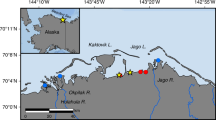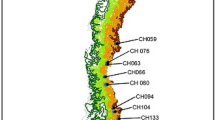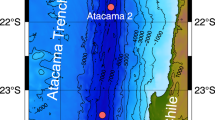Abstract
DDT is a useful model compound for studying the circulation of a toxic pollutant in the global environment1,2. An understanding of this process could in future be related to potentially more hazardous materials. Present models of the dynamics of DDT circulation can account for only a small fraction of the amounts of DDT and DDE which are known to have been released into the environment. Major unknowns include the extent to which the atmosphere and oceans act as reservoirs and the transfer rate of these residues from the atmosphere to the oceans where, according to present ideas, they may be removed from circulation by transfer to the abyss3. Such atmospheric and oceanic transport mechanisms may carry pollutants into the ecologically protected area of Antarctica and it is necessary to assess the extent to which this is occurring and the relative importance of alternative input routes. The atmosphere has been assumed to play the major role in the transport cycle but there is a lack of supporting data. We report here levels of DDT and metabolites in Antarctic snow which suggest that the role of the atmosphere in the transport of DDT may have been overemphasised.
This is a preview of subscription content, access via your institution
Access options
Subscribe to this journal
Receive 51 print issues and online access
$199.00 per year
only $3.90 per issue
Buy this article
- Purchase on Springer Link
- Instant access to full article PDF
Prices may be subject to local taxes which are calculated during checkout
Similar content being viewed by others
References
Woodwell, G. M., Craig, P. P., and Johnson, H. A., Science, 174, 1102 (1972).
Cramer, J., Atmos. Environ., 7, 241 (1973).
Fishbein, L., J. Chromatogr., 98, 177 (1974).
Giam, C. S., and Wong, M. K., J. Chromatogr., 72, 283 (1972).
Harvey, G. R., Steinhauer, W. G., and Teal, J. M., Science, 180, 643 (1973).
Risebrough, R. W., and Carmignani, G. M. in Proc. Colloq. Conserv. prob. Ant. (edit. by Parker, B. C.), 63 (Allen Press Inc., Lawrence, Kansas, 1972).
Peterle, T. J., Nature, 224, 620 (1969).
Tarrant, K. R., and Tatton, J. O'G., Nature, 219, 725 (1968).
Moilanen, K. W., and Crosby, D. G., Science, 180, 578 (1973).
Sladen, W. J. L., Menzie, C. M., and Reichel, W. L., Nature, 210, 670 (1966).
George, J. L., and Frear, D. E. H., J. appl.Ecol. 3 (suppl.), 155 (1966).
Conroy, J. W. H., and French, M. C., Br. Antarct. Surv. Bull., No. 38, 43 (1974).
Abell, P. I., Draffan, G. H., Eglinton, G., Hayes, J. M., Maxwell, J. R., and Pillinger, C. T., Proc. Apollo 11 Lunar Sci. Conf., 2, 1760 (1970).
Zoro, J. A., Hunter, J. M., Eglinton, G., and Ware, O. C., Nature, 44, 83 (1974).
Author information
Authors and Affiliations
Rights and permissions
About this article
Cite this article
PEEL, D. Organochlorine residues in Antarctic snow. Nature 254, 324–325 (1975). https://doi.org/10.1038/254324a0
Received:
Revised:
Issue Date:
DOI: https://doi.org/10.1038/254324a0
This article is cited by
-
The record of global pollution in polar snow and ice
Nature (1985)
-
DDTs and PCB isomers and congeners in antarctic fish
Archives of Environmental Contamination and Toxicology (1983)
-
High abundances of long-chain normal alkanoic acids in Antarctic soil
Nature (1981)
-
Transfer of chlorinated biphenyls to Antarctica
Nature (1976)
Comments
By submitting a comment you agree to abide by our Terms and Community Guidelines. If you find something abusive or that does not comply with our terms or guidelines please flag it as inappropriate.



